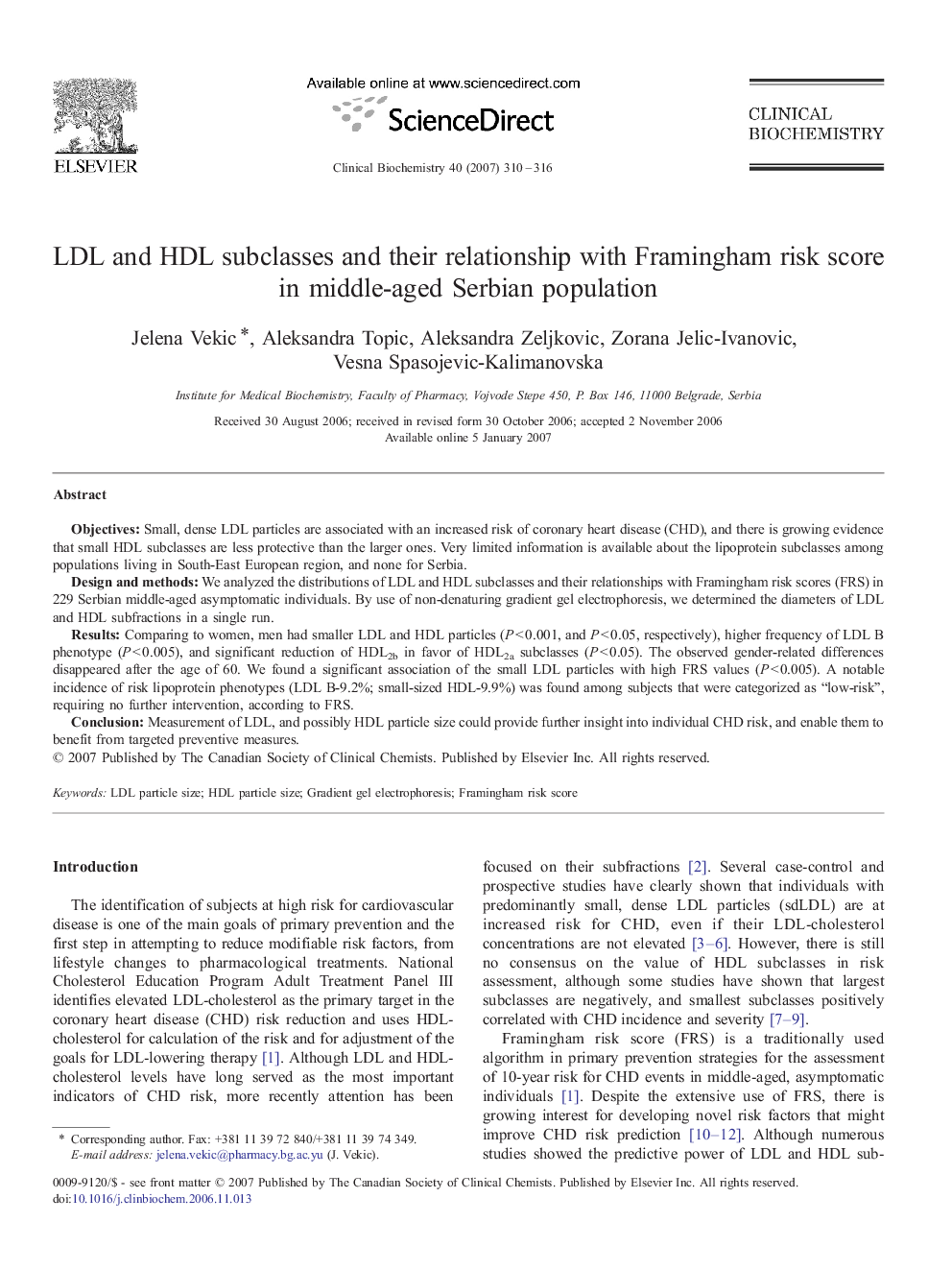| Article ID | Journal | Published Year | Pages | File Type |
|---|---|---|---|---|
| 1970293 | Clinical Biochemistry | 2007 | 7 Pages |
Objectives:Small, dense LDL particles are associated with an increased risk of coronary heart disease (CHD), and there is growing evidence that small HDL subclasses are less protective than the larger ones. Very limited information is available about the lipoprotein subclasses among populations living in South-East European region, and none for Serbia.Design and methods:We analyzed the distributions of LDL and HDL subclasses and their relationships with Framingham risk scores (FRS) in 229 Serbian middle-aged asymptomatic individuals. By use of non-denaturing gradient gel electrophoresis, we determined the diameters of LDL and HDL subfractions in a single run.Results:Comparing to women, men had smaller LDL and HDL particles (P < 0.001, and P < 0.05, respectively), higher frequency of LDL B phenotype (P < 0.005), and significant reduction of HDL2b in favor of HDL2a subclasses (P < 0.05). The observed gender-related differences disappeared after the age of 60. We found a significant association of the small LDL particles with high FRS values (P < 0.005). A notable incidence of risk lipoprotein phenotypes (LDL B-9.2%; small-sized HDL-9.9%) was found among subjects that were categorized as “low-risk”, requiring no further intervention, according to FRS.Conclusion:Measurement of LDL, and possibly HDL particle size could provide further insight into individual CHD risk, and enable them to benefit from targeted preventive measures.
